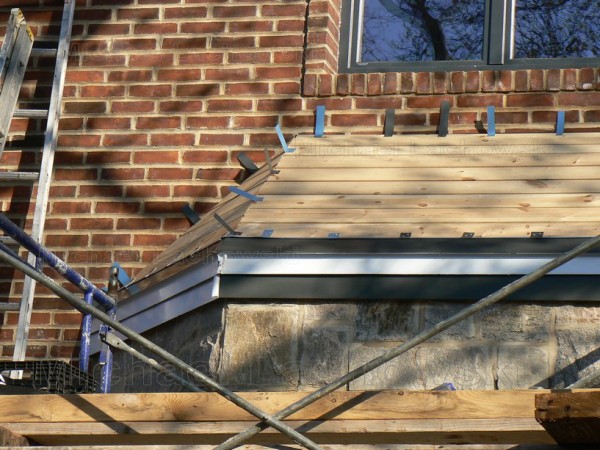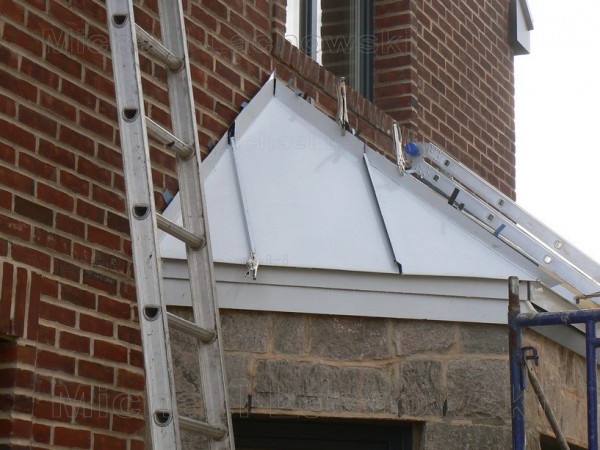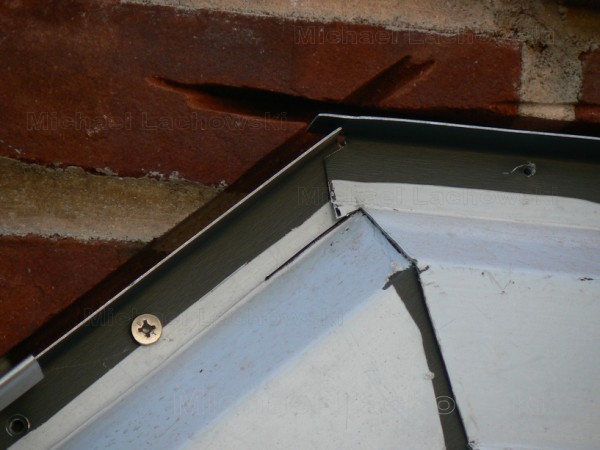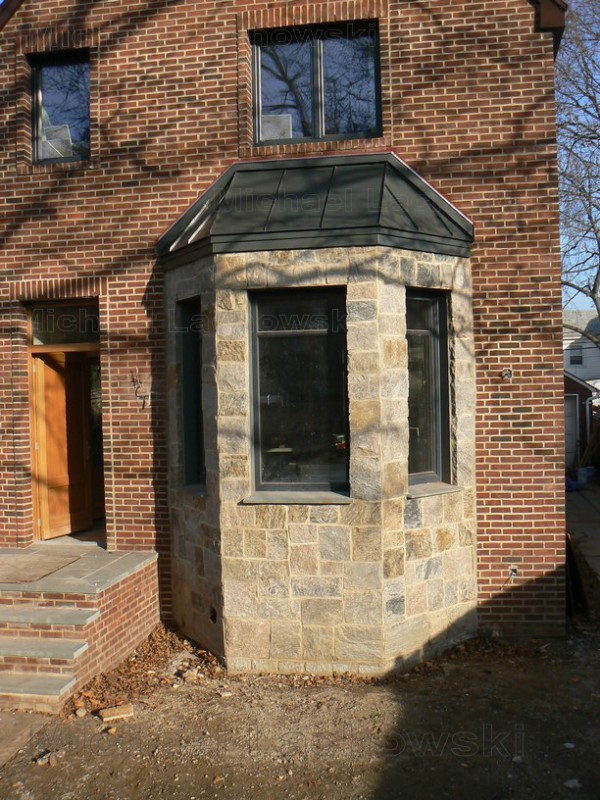Owner/Architect: Roberto Petrucelli.
Location: Bayside, Queens, New York.
Material: Zinc, preweathered Graphite Gray, 0.8mm, by Rheinzink.

One of my recent projects was a tiny zinc roof over bay-window for the architect Roberto Petrucelli. He was building a super energy efficient home in Queens, New York.
Roberto, having prior experience with zinc, could see that the people brought by his general contractor didn’t have the knowledge to work with this material. His searches for somebody that could do the work lead him to me.

Zinc roofing in USA.






The secret for a really successful zinc roof, one that stands up to the promise of close to a century of service life, lies in details that are hidden from the eye.
These are: a solid wooden deck, an effective ventilation of the underside of the roof and an intricate system of folded connections that hold the individual zinc panels together.
These folds, besides being water-proof, allow for relative movement between the different zinc parts.
The metal skin is tied down to the wooden deck by an array of metal clips that are welted into these folds.
The water-proofing system resembles much more the functionality of the feathers of a duck than of the shell of a submarine. There is no place for stiff soldered connections and no need for unreliable caulking.